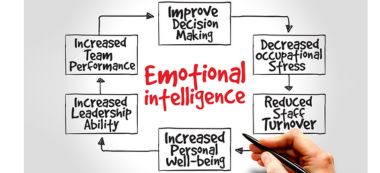- Courses
- GS Full Course 1 Year
- GS Full Course 2 Year
- GS Full Course 3 Year
- GS Full Course Till Selection
- Answer Alpha: Mains 2025 Mentorship
- MEP (Mains Enrichment Programme) Data, Facts
- Essay Target – 150+ Marks
- Online Program
- GS Recorded Course
- Polity
- Geography
- Economy
- Ancient, Medieval and Art & Culture AMAC
- Modern India, Post Independence & World History
- Environment
- Governance
- Science & Technology
- International Relations and Internal Security
- Disaster Management
- Ethics
- NCERT Current Affairs
- Indian Society and Social Issue
- NCERT- Science and Technology
- NCERT - Geography
- NCERT - Ancient History
- NCERT- World History
- NCERT Modern History
- CSAT
- 5 LAYERED ARJUNA Mentorship
- Public Administration Optional
- ABOUT US
- OUR TOPPERS
- TEST SERIES
- FREE STUDY MATERIAL
- VIDEOS
- CONTACT US
Case Study-Emotional Intelligence in Corporate Offices
Case Study-Emotional Intelligence in Corporate Offices

Scenario: Ranbir, the CEO of a growing company, faces a recurring problem in the bi-monthly open meetings with staff. These meetings, intended to address employee grievances and concerns, have become a source of frustration for Ranbir. Employees often bring up complaints about minor issues, such as insufficient lounge space, inadequate bathrooms, and crèche facilities. Despite acknowledging space constraints, employees continue voicing the same issues, frustrating Ranbir. He has developed a habit of attending these meetings with a cheerful demeanor but a disengaged attitude, mentally “switching off” during the proceedings. This lack of attention and empathy has contributed to employee dissatisfaction, and several staff members have left the company, negatively impacting the business.
Question: What actions would you take in Ranbir’s situation, and why?
Analysis
Key Issues in the Case:
-
Employee Dissatisfaction:
- The staff feels unheard and frustrated due to unresolved grievances.
- The ongoing lack of attention to employee concerns leads to a decline in morale and increasing attrition.
-
CEO’s Attitude:
- Ranbir’s dismissive and disengaged behavior during meetings exacerbates the situation, preventing meaningful resolution.
- His failure to empathize with employees' concerns contributes to a lack of trust and respect between the management and staff.
-
Company Growth:
- As the company has recruited new specialists, the physical infrastructure has become inadequate, further highlighting the need for Ranbir to address the issue promptly.
- The company’s growth and the resulting strain on resources have created a situation that demands swift action.
Stakeholders:
- Ranbir (CEO): Responsible for managing the company, addressing employee grievances, and ensuring organizational health.
- Employees (Old and New): Their morale, productivity, and retention are impacted by management’s response to their concerns.
- Shareholders: Concerned about the company’s performance, employee satisfaction, and overall growth.
- Functional Heads and Managers: Responsible for facilitating communication and addressing departmental issues.
Situational Challenges for the CEO:
-
Crisis Management:
- Ranbir must handle the employee dissatisfaction with limited resources while minimizing the negative impact on the organization.
- Effective decision-making is crucial to restoring the company’s culture and preventing further attrition.
-
Conflict Management:
- Ranbir must manage conflicts arising from employee grievances, which are critical to maintaining a positive work culture.
- He needs to address both tangible (space) and intangible (emotional) issues to resolve conflicts effectively.
-
Leadership Challenges:
- Ranbir’s leadership style appears detached and indifferent, which negatively impacts the relationship with employees.
- He needs to display emotional intelligence and empathy to reconnect with his team.
Ethical Components to Apply:
-
Emotional Intelligence (EI):
- Self-awareness: Recognizing his own emotional response to meetings and its impact on staff morale.
- Self-regulation: Managing his reactions and disengagement in meetings.
- Motivation: Keeping the focus on company goals while being mindful of employee concerns.
-
Emotional Quotient (EQ):
- Empathy: Understanding and acknowledging the emotions and frustrations of the employees.
- Social Skills: Building rapport, communicating openly, and resolving conflicts effectively.
- Interpersonal Relationships: Strengthening connections between management and employees to foster a collaborative environment.
-
Leadership Styles:
- Transformational Leadership: Inspiring and motivating employees by addressing their concerns and demonstrating commitment to change.
- Servant Leadership: Prioritizing the well-being and needs of employees, helping them feel valued and supported.
CEO’s Course of Action:
Concrete Plan of Action:
-
Immediate Workspace Improvements:
- Office Expansion: Given the company’s growth, Ranbir should prioritize finding a larger workspace. This can be an immediate, long-term solution to employee concerns.
- Temporary Solutions: Until a permanent solution is found, temporary adjustments can be made:
- Allocating nearby office space on rent to relieve the pressure on the current infrastructure.
- Introducing flexible work-from-home policies (hybrid model), reducing the number of employees in the office at any given time.
-
Engage More Actively in Meetings:
- Active Listening: Ranbir should participate more attentively in the meetings. Rather than mentally checking out, he must listen to employee grievances with empathy and patience, even if they seem trivial.
- Acknowledging Concerns: By showing that he values their input, Ranbir will foster a sense of emotional connection and respect. This can rebuild trust between the management and employees.
- Responsive Feedback: Addressing the concerns, even if partial solutions are offered initially, will show employees that their voices are heard and valued.
-
Encourage Open Dialogue and Transparency:
- Focus Group Discussions: In addition to the open meetings, Ranbir could consider having smaller, focused discussions with specific departments or teams. This would allow for deeper, more targeted conversations on issues affecting their work and well-being.
- Regular Follow-ups: Establishing a follow-up system ensures that issues raised in meetings are tracked and resolved over time, giving employees confidence that their concerns are being actively addressed.
-
Empathy and Emotional Intelligence Training:
- Ranbir, along with other managers, should undergo empathy training to better understand the emotional needs of their teams.
- Developing emotional intelligence within the leadership team can help in responding to employee grievances in a more constructive and empathetic manner.
-
Addressing the Underlying Culture:
- Cultivating Emotional Intelligence (EQ): Ranbir can introduce EQ-based workshops for all staff to improve self-awareness, emotional regulation, and social skills. This would help to foster a more harmonious and emotionally intelligent workplace culture.
- Recognize Employee Needs: Moving beyond mere infrastructure concerns, addressing employee well-being holistically (e.g., work-life balance, health, professional development) would help boost morale and retention.
Conclusion:
In this scenario, the resolution of conflict and improvement of organizational dynamics requires a shift from an indifferent, disengaged approach to one that is empathetic, attentive, and responsive. Ranbir must prioritize emotional intelligence and active listening to rebuild trust and restore a healthy work culture. While addressing physical infrastructure challenges, he must also nurture emotional well-being among employees to ensure that they feel valued. By fostering a culture of open communication, empathy, and emotional awareness, Ranbir can resolve the conflict, enhance employee satisfaction, and strengthen the organization in the long run.
|
Also Read |
|




